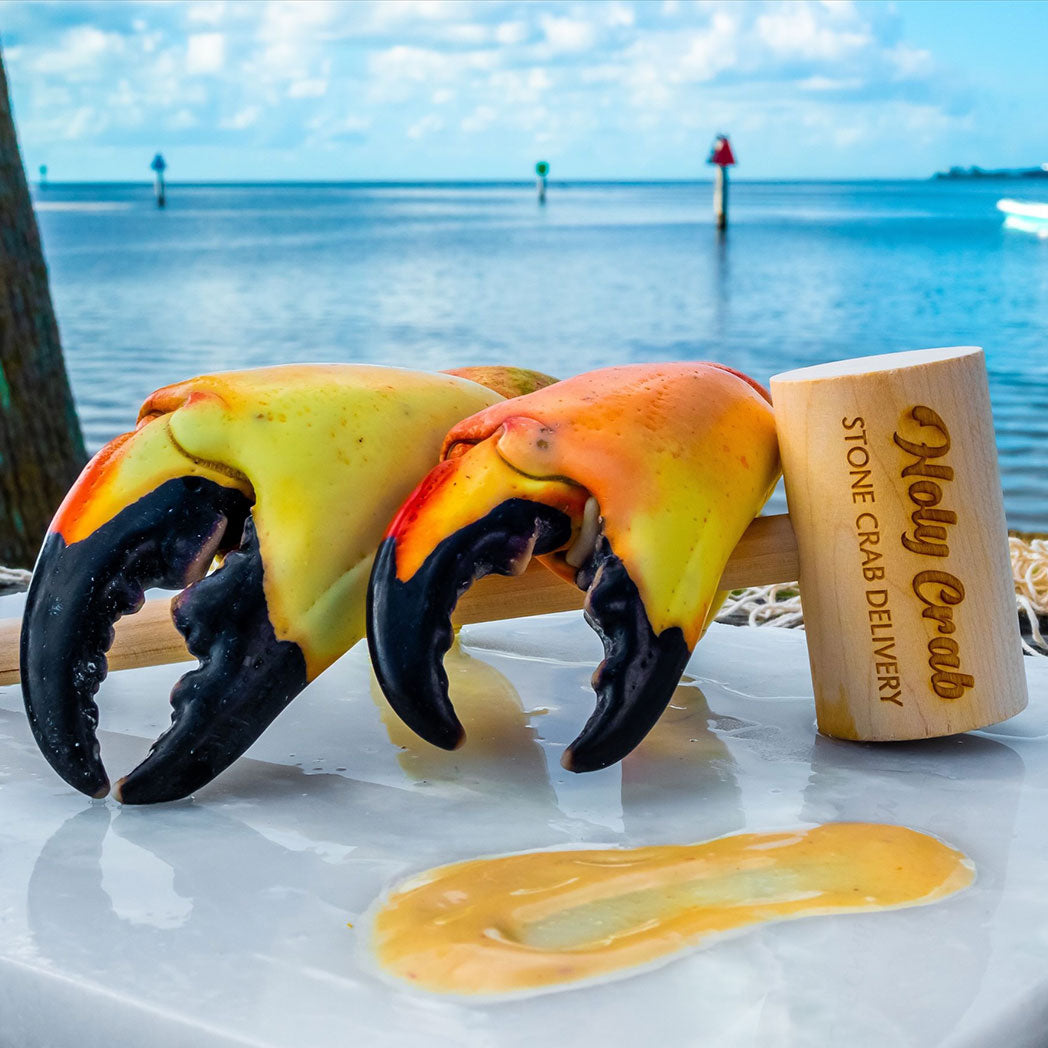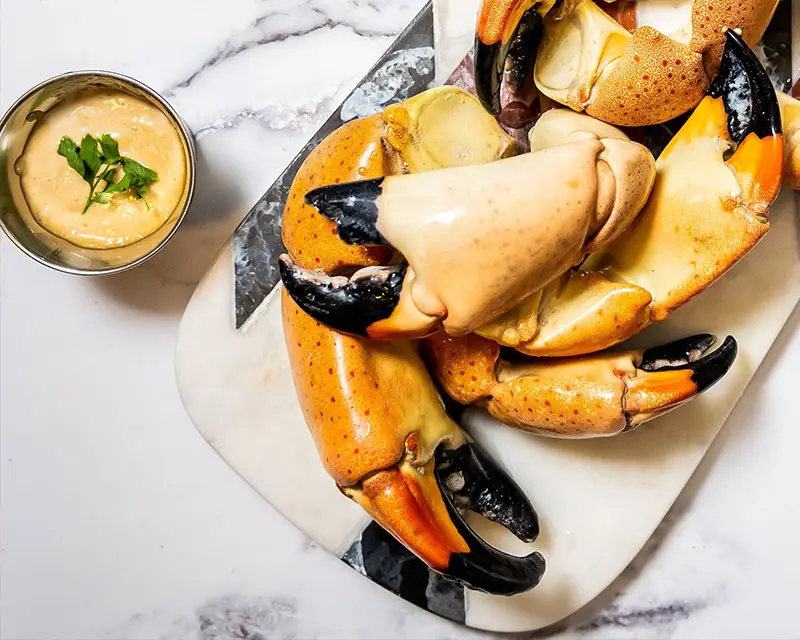
· By Lucas Calderon
What To Know: Florida Stone Crabs
Did you know that Florida Stone Crabs are one of the most popular and sought-after seafood delicacies in the Sunshine State? These remarkable creatures boast a unique ability to regrow their claws, making them a sustainable delicacy. With their distinctive black-tipped claws and tender meat, Florida Stone Crabs are a true gastronomic delight.
10 Things to Know about Florida Stone Crabs
If you’ve ever wondered about these fascinating crustaceans, look no further. In this article, we’ll dive into 10 things to know about Florida Stone Crabs that will leave you in awe of these incredible creatures. So sit back, relax, and get ready to discover the wonders of these clawed wonders!
1. Appearance
Size
Florida Stone Crabs are known for their impressive size, with adult males reaching an average carapace width of 6 to 7 inches. Females are slightly smaller, typically measuring around 5 to 6 inches. The claws of the stone crab are the most notable feature, often growing much larger than the body. A single claw can measure anywhere from 3.5 to 5.5 inches in length!
Color
The coloration of Florida Stone Crabs can vary, but they are predominantly a brownish-olive shade, which helps them blend in with their rocky coral reef environment. Their carapace has a distinctive mottled pattern, with dark brown spots and patches. The undersides of their claws are usually a lighter color, ranging from cream to a pale yellow.
Claws
One of the most fascinating aspects of Florida Stone Crabs is their incredible ability to regenerate their claws. When threatened or caught by a potential predator, the crab can voluntarily detach its own claw as a defense mechanism. The lost claw will then slowly regenerate over time. However, it can take up to two years for the regenerated claw to reach full size. This unique adaptation allows the Stone Crab to survive and continue to thrive in its habitat.
2. Habitat
Location
Florida Stone Crabs are primarily found along the Gulf of Mexico and the western coast of Florida, where the warm waters and diverse ecosystem provide an ideal habitat for their survival. They are commonly found in areas such as the Florida Keys, Tampa Bay, and the Everglades.
Environment
Stone Crabs inhabit shallow coastal waters, specifically mangrove forests, seagrass beds, and coral reefs. These habitats offer protection, abundant food sources, and suitable conditions for reproduction. The crabs are well adapted to their environment, with their coloration allowing them to camouflage among the rocks and corals.
Habitat Features
The stone crab’s habitat is characterized by its abundant and diverse marine life. The mangrove forests serve as nurseries for many species, providing shelter and food for the young Stone Crabs. Seagrass beds offer a source of shelter and food, while coral reefs attract an array of organisms, providing both predators and prey for the stone crabs.

3. Physical Characteristics
Walking Legs
Florida Stone Crabs possess five pairs of walking legs which they use for locomotion and foraging. These legs are strong and well-adapted for navigating their rocky habitat, allowing them to climb and grip onto surfaces with ease.
Eyes
Stone Crabs have compound eyes that provide them with excellent vision. These eyes consist of multiple lenses, enabling them to detect movements and identify potential threats or prey. Their visual acuity helps them locate food and navigate their surroundings.
Defense Mechanism
The Stone Crab’s most notable defense mechanism is its ability to detach its own claw when threatened or captured. By sacrificing its claw, the crab can escape from predators or human harvesters. Once detached, the crab has the capability to regenerate its claw over time. This remarkable defense mechanism allows the Stone Crab to protect itself while ensuring its survival.
4. Diet
Primary Food Source
Florida Stone Crabs have a varied diet, primarily consisting of mollusks, such as clams and mussels, as well as crustaceans like small crabs and shrimp. They are opportunistic feeders, taking advantage of whatever prey is available in their habitat.
Feeding Behavior
Stone Crabs are nocturnal feeders, actively searching for food during the night. They use their strong claws to crack open shells and extract the meat inside. Their feeding behavior is a slow and deliberate process, as they carefully extract the edible portions of their prey.
Predators
While Florida Stone Crabs have effective defense mechanisms, they still face predators in their natural environment. Some of their main predators include sharks, larger fish species, marine mammals, and even humans who enjoy their delicious claws. These predators play a crucial role in maintaining the balance of the ecosystem and the overall health of the Stone Crab population.
5. Life Cycle
Reproduction
The reproductive cycle of Florida Stone Crabs begins in the late spring and early summer. Mating occurs when the female molts and becomes receptive to the male’s advances. The male Stone Crab will then deposit a packet of sperm called a spermatophore, which the female uses to fertilize her eggs.
Eggs
After fertilization, the female carries the eggs with her until they hatch. The eggs are attached to the underside of her abdomen, forming a distinct orange mass known as an egg mass. The female Stone Crab can carry thousands of eggs, providing protection and oxygen until they are ready to hatch.
Larval Stage
Once the eggs hatch, they enter the larval stage of their life cycle. The larvae, called zoea, are microscopic and have a planktonic lifestyle. They drift in the water column, feeding on small organisms and growing rapidly. As they molt and develop, they go through several larval stages before eventually settling on the seafloor.
Molting
Like all crustaceans, Stone Crabs undergo a process called molting, where they shed their exoskeleton to allow for growth. During molting, the crabs are vulnerable and seek shelter to protect themselves from potential predators. Once the new exoskeleton hardens, the Stone Crab resumes its normal activities in its fully grown form.
6. Stone Crab Season
Regulations
Florida Stone Crab harvesting is regulated to ensure the sustainability and conservation of the species. The state of Florida has established specific regulations to protect the stone crab population, including size restrictions for legal harvest and limits on the number of claws that can be taken from individual crabs. These regulations help maintain the health of the population and prevent overfishing.
Harvesting
Stone Crab harvesting involves carefully removing one or both claws from the crab. Fishermen use specialized equipment to capture the crabs without causing harm and minimize stress to the animal. The removed claws are typically cooked immediately on the fishing boats to ensure freshness and preserve the taste and texture.
Sustainability
Sustainability is a key focus in the stone crab industry. Measures such as size restrictions and claw removal protocols help preserve the reproductive capacity of the crabs and prevent excessive fishing pressure. By following these guidelines, fishermen can ensure the long-term viability of the Florida Stone Crab population and support the overall health of the ecosystem.
7. Commercial Value
Pricing
Florida Stone Crabs are highly sought after for their delicious meat, which is considered a delicacy. The pricing of stone crab claws is influenced by factors such as size, availability, and demand. Typically, larger claws command a higher price due to their meatier content.
Economic Importance
The commercial harvest of stone crab claws contributes significantly to the economy of Florida. It supports local fishermen, processing facilities, and the wider seafood industry. Stone crabs are a valuable source of income for many coastal communities, attracting tourists and seafood enthusiasts who come to enjoy the unique taste and culinary experience.
Demand
Demand for Florida Stone Crab claws remains consistently high throughout the season. The succulent and sweet meat, coupled with the knowledge of sustainable harvesting practices, makes them a desirable seafood choice. The high demand for stone crab claws has stimulated the growth of online seafood delivery services, ensuring that people can enjoy this delicacy no matter where they are located.
8. Stone Crab Festival
Annual Celebration
The Stone Crab Festival is an annual celebration that pays homage to the Florida Stone Crab and the rich seafood heritage of the region. It brings together locals and visitors alike to enjoy live music, delicious seafood, and fun-filled activities for the whole family.
Attractions
The festival showcases the diverse culinary scene of the area, with numerous vendors offering a range of stone crab dishes and other seafood delicacies. Visitors can indulge in mouthwatering stone crab claws, crab cakes, crab bisque, and much more. In addition to the gastronomic delights, there are also live entertainment, arts and crafts, and educational exhibits highlighting the importance of marine conservation.
Event Details
The Stone Crab Festival is typically held during the peak of stone crab season, allowing attendees the opportunity to experience the freshest and most flavorful claws available. The festival usually spans several days, giving visitors ample time to explore the local culture and enjoy the festivities. It’s a must-attend event for seafood enthusiasts and those looking to immerse themselves in the vibrant coastal atmosphere.
9. Stone Crab Industry
Boat Operations
The stone crab industry relies heavily on the operations of fishing boats, which venture out into the coastal waters to harvest the crabs. These boats are equipped with specialized gear and technologies to ensure the safe capture of Stone Crabs and the preservation of their claws. The expertise of the boat operators is essential in maintaining sustainable fishing practices and adhering to regulations.
Processing Facilities
Once the stone crab claws are harvested, they are transported to processing facilities where they undergo cleaning and grading. The claws are carefully sorted according to size and quality standards, ensuring that only the finest claws make it into the market. These facilities play a crucial role in maintaining the high quality and freshness of stone crab claws.
Employment Opportunities
The stone crab industry provides numerous employment opportunities for individuals in coastal communities. From boat operators and fishermen to processing plant workers and seafood distributors, there are a variety of jobs that sustain the industry. The stone crab season creates seasonal employment, supporting local economies and providing livelihoods to many in the region.
10. Stone Crab Conservation
Conservation Efforts
Conservation efforts are essential for the long-term sustainability of Florida Stone Crabs. Organizations, researchers, and government agencies work together to monitor the population, conduct studies to better understand their ecology, and implement conservation strategies. By promoting responsible fishing practices and advocating for habitat protection, these conservation efforts aim to preserve the stone crab population for generations to come.
Threats
While the stone crab population remains relatively stable, they still face several threats. These include habitat degradation, water pollution, climate change, and the potential impacts of overfishing if not managed properly. Elevated water temperatures, for example, can affect the growth and development of larvae, potentially impacting their survival rates. Continued monitoring and action are crucial in mitigating these threats.
Research and Monitoring
Ongoing research and monitoring are essential for understanding the behavior and population dynamics of Florida Stone Crabs. Scientists study their reproductive patterns, movement patterns, and response to environmental changes. This knowledge helps inform management decisions and ensure the well-being of the species. By conducting regular surveys and tracking population trends, researchers can make informed recommendations to support the conservation of the stone crab population.
As you can see, Florida Stone Crabs are not only impressive in appearance but also play a crucial role in the marine ecosystem and the economic fabric of the regions they inhabit. Their unique ability to regenerate claws, combined with the efforts of the stone crab industry and conservation initiatives, ensures a sustainable future for this fascinating species. So, the next time you indulge in a plate of succulent stone crab claws, savor the flavors and appreciate the amazing journey these claws have taken from the depths of the ocean to your plate.

